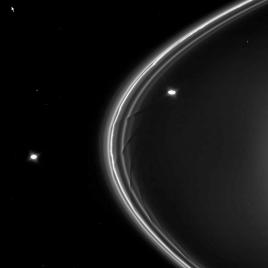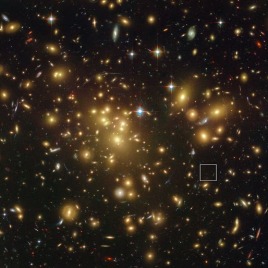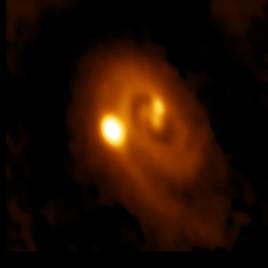Half of all stars that are similar to the Sun in the center of our solar system have at least one companion. There are two leading theories explaining why stars form in multiples, and a recent study provides further physical evidence to support one of those theories. The evidence comes in the form of high-resolution […]
Tag: astrophysics
How to build a gas giant
Using computer simulations researchers have modeled the evolution of the gas giants in the Solar System, potentially providing an account for how the largest planets in our system formed. The study shows that when small centimeter- to meter-sized “pebbles” slowly accumulate they form planetesimals which become the cores of gas giants. It was previously thought […]

Explaining the origin of shepherd moons
The origin of “shepherd moons” in planetary rings such as those found on Saturn and Uranus may be a natural consequence of ring evolution around giant planets. Studying the two shepherd moons in Saturn’s F ring system, Prometheus and Pandora, researchers has found how these moons may form. Using computer simulated collisions between icy moonlets […]

Changing when stars were formed
A galaxy from the early universe is providing new insight on the formation of stars. Researchers have found one of the youngest and most remote galaxies, estimated to have formed when the Universe was approximately 700 million years old. The astronomers believe the galaxy has either been consistently forming stars at a moderate rate since […]
Launch of two Canadian nanosatellites
At 15:11:11 Eastern Daylight Time on July 19, 2014, two Canadian-designed satellites were launched from Yasny, Russia. Named BRITE-Toronto and BRITE-Montreal, these devices – no bigger than a car battery – will stare for long periods of time at the brightest stars in the night sky, monitoring shifts in their brightness and colour. Monitoring these shifts […]
